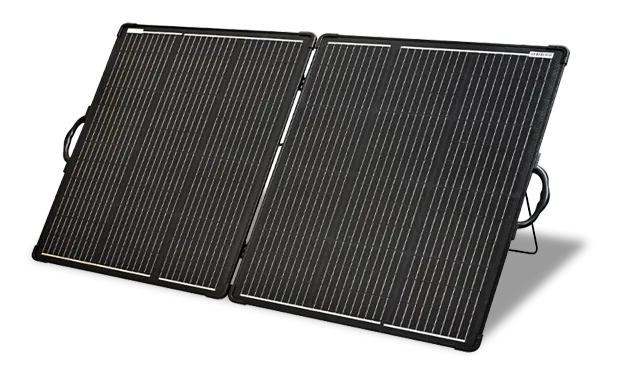Introduction
RV solar panels are a type of solar power system that is specifically designed to power recreational vehicles, motorhomes, and travel trailers. These panels work by capturing sunlight and converting it into usable electricity, which can then be stored in batteries or used to power appliances and other devices inside the RV.
The importance of RV solar panels lies in their ability to provide a reliable and sustainable source of power while on the road. Unlike traditional power sources, such as generators or grid connections, solar panels do not require fuel and do not produce harmful emissions, making them a cleaner and more environmentally friendly option.
When it comes to choosing the best RV solar panels for 2023, there are several top options to consider. One of the most popular brands is Renogy, which offers a range of panels in different sizes and configurations to suit different RV setups. Another top contender is Zamp Solar, which specializes in portable and lightweight panels that are easy to install and use.
Other noteworthy brands in the RV solar panels manufacturer include Sungold, Go Power!, HQST, and WindyNation. Each of these brands offers unique features and benefits, such as high-efficiency ratings, durable construction, and advanced monitoring systems.
In terms of expanding on these descriptions, it’s important to delve into the specific features and benefits of each brand and product. For example, Renogy’s panels are known for their high-efficiency ratings, which means they can generate more power with less sunlight than other panels on the market. Sungold Solar’s portable panels, on the other hand, are ideal for RVers who need a flexible and easy-to-use option that can be set up quickly and easily.
By highlighting the unique benefits and features of each brand and product, readers can make an informed decision when choosing the best RV solar panels for their specific needs and preferences. Additionally, providing tips and advice on installation, maintenance, and troubleshooting can also be helpful for those new to using solar panels in their RVs.
Key Factors to Consider When Choosing RV Solar Panels
1、Power output and efficiency: The power output and efficiency of the solar panels will determine how much energy they can generate and how quickly they can charge your RV battery. It is important to choose solar panels that can generate enough power to meet your energy needs, but are also efficient enough to maximize the amount of energy generated per square foot.
2、Size and weight: RV solar panels should be compact and lightweight to fit the limited roof space available on most RVs. Additionally, the weight of the solar panels should be taken into consideration to ensure they do not exceed the maximum load capacity of the RV roof.
3、Durability and warranty: Since RV solar panels are constantly exposed to the elements, they must be durable and able to withstand harsh weather conditions. Look for solar panels that are made with high-quality materials and come with a reliable warranty to ensure long-lasting performance.
4、Compatibility with RV battery and charge controller: Before selecting RV solar panels, make sure they are compatible with your RV battery and charge controller. You’ll want to ensure that the panels can provide enough power to your battery and work seamlessly with your RV’s electrical system.
Reviews of the Best RV Solar Panels for 2023:
When it comes to choosing the best RV solar panel, there are several options available in the market. To help you make an informed decision, we’ve put together a list of the top RV solar panels for 2023, along with their features, pros, and cons.
1、Sungold 200W Flexible Solar Panel
The Sungold 200W flexible solar panel is an excellent option for those looking for a lightweight and durable solar panel. The panel is made of high-efficiency mono-Si cells that can convert up to 23% of the solar energy into usable electricity. The flexible design allows for easy installation on curved surfaces, making it ideal for RVs. The Sungold solar panel also comes with a 25-year power output warranty and a 5-year workmanship warranty, giving you peace of mind.
Pros:
- Lightweight and flexible design
- High-efficiency mono-Si cells
- Easy installation on curved surfaces
- Long power output warranty
Cons:
- Relatively expensive compared to other options
2、Renogy 400W 12V Solar Panel Kit
The Renogy 400W 12V solar panel kit is a complete solution for those who need more power for their RV. The kit includes four high-efficiency 100W monocrystalline solar panels, a 30A PWM charge controller, and all the necessary mounting hardware. The panels are designed to withstand harsh weather conditions and can provide enough power to run multiple appliances in your RV. The kit also comes with a 25-year power output warranty, giving you peace of mind.
Pros:
- Complete kit with all necessary hardware
- High-efficiency monocrystalline solar panels
- Can provide enough power to run multiple appliances
Cons:
- Relatively heavy and bulky
- May require professional installation
3、HQST 100W Monocrystalline Solar Panel
The HQST 100W monocrystalline solar panel is a budget-friendly option for those looking to get started with solar power for their RV. The panel is made of high-efficiency cells that can convert up to 18.4% of solar energy into usable electricity. The panel is also lightweight and easy to install, making it ideal for RVs. The HQST solar panel comes with a 25-year power output warranty and a 5-year workmanship warranty, giving you peace of mind.
Pros:
- Budget-friendly option
- High-efficiency cells
- Lightweight and easy to install
- Long power output warranty
Cons:
- May not provide enough power for larger RVs or multiple appliances
4、Zamp Solar 140-Watt Portable Solar Panel Kit
The Zamp Solar 140-Watt portable solar panel kit is an excellent option for those who need a portable and versatile solar panel for their RV. The kit includes a 140-Watt monocrystalline solar panel, a charge controller, and a carrying case. The panel is designed to be portable and can be easily moved around to capture the most sunlight. The Zamp Solar panel also comes with a 25-year power output warranty, giving you peace of mind.
Pros:
- Portable and versatile design
- High-efficiency monocrystalline solar panel
- Comes with a carrying case
- Long power output warranty
Cons:
- May not provide enough power for larger RVs or multiple appliances
- Relatively expensive compared to other portable solar panels
- How to Install RV Solar Panels
How to Install RV Solar Panels
Installing RV solar panels can be a challenging task, but with the right guidance, it can be done smoothly. Here are the step-by-step instructions on how to install RV solar panels:
Step 1: Choose the right location
Before you start installing solar panels, you need to choose the right location for your RV. Ideally, the solar panels should be installed on the roof of your RV, but they can also be installed on the ground or on a pole. The location should have a clear view of the sun throughout the day.
Step 2: Mount the panels
Once you have chosen the location, you need to mount the panels securely. Make sure that the mounting brackets are compatible with your RV and are installed according to the manufacturer’s instructions. You can either use screws or adhesive to secure the panels in place.
Step 3: Connect the panels
After mounting the panels, you need to connect them using the provided wiring. It’s important to ensure that the wiring is routed safely and securely to avoid any damage or interference. You can either connect the panels in series or parallel, depending on your RV’s requirements.
Step 4: Connect the battery and charge the controller
Next, you need to connect the solar panels to your RV’s battery and charge controller. The charge controller is responsible for regulating the voltage and current from the solar panels to the battery. Make sure that the connections are tight and secure to avoid any accidents or damage.
Step 5: Optimize the angle and orientation
To get the maximum sun exposure, you need to optimize the angle and orientation of the panels. You can use an angle finder to determine the optimal angle based on your location and the time of day. It’s also important to ensure that the panels are facing the right direction for optimal sun exposure.
By following these steps, you can install RV solar panels and enjoy the benefits of renewable energy on the go.





































